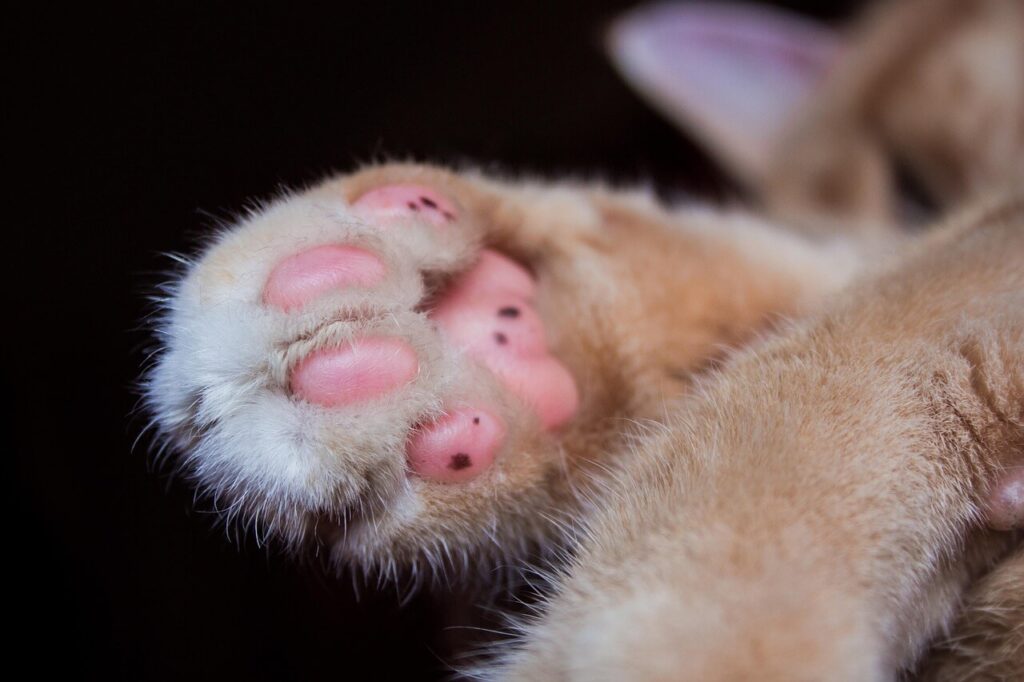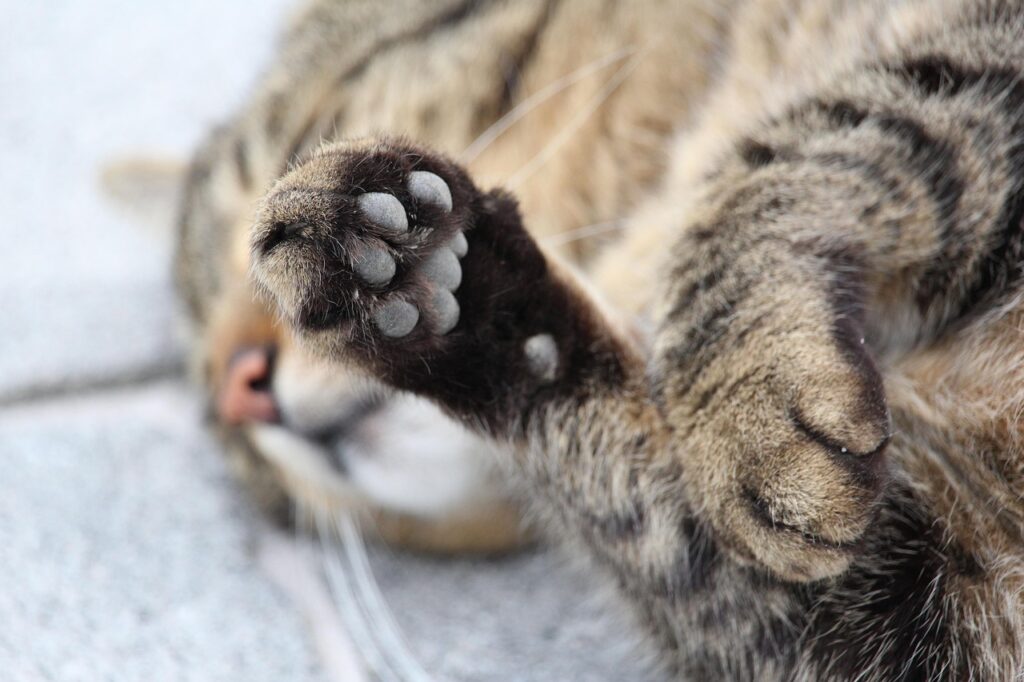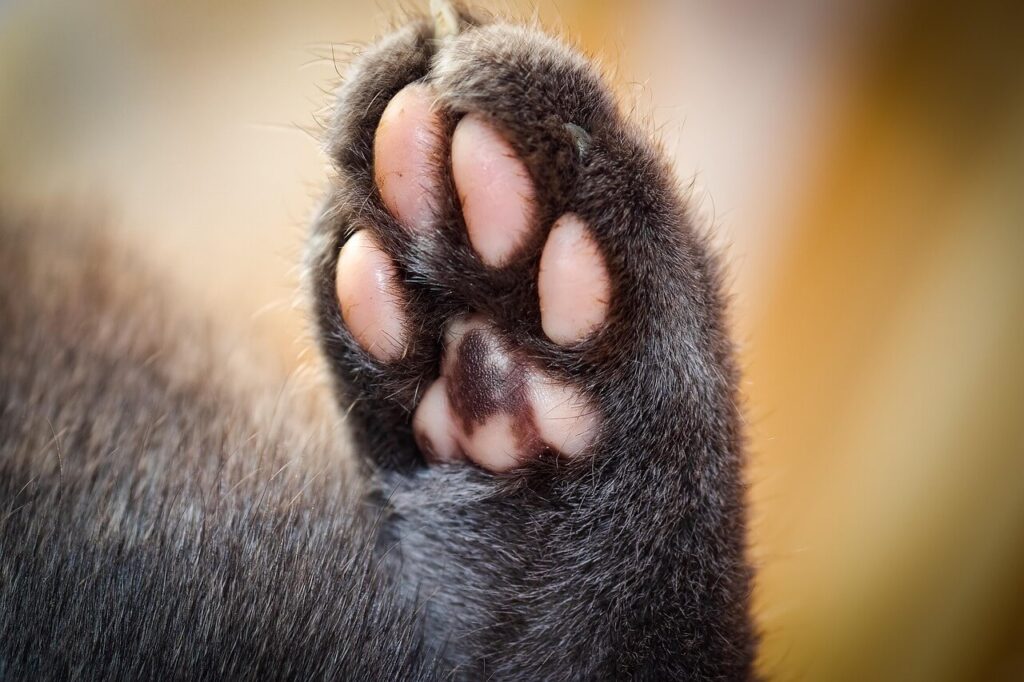How to Care for Cat Paw Pads
Cat paw pads are tough yet sensitive structures that play a vital role in your cat’s balance, movement, and environmental interaction. Though often overlooked, paw pad care is an important part of feline health. Dryness, injury, or exposure to harsh surfaces can lead to discomfort, cracking, or infections. This guide will show you how to properly care for your cat’s paw pads to ensure comfort and long-term health.

Why Paw Pads Matter
A cat’s paw pads are made of thick, cushioned skin that protects bones and joints from impact. They also contain scent glands that help cats mark territory and communicate. However, these pads are not immune to wear, injury, or irritation.
Because cats are often silent and stoic when in pain, issues with their paws can go unnoticed. Keeping their paw pads clean, soft, and injury-free helps maintain their mobility and comfort.
Keep Paws Clean and Dry
Regular paw checks are important to ensure debris or dirt doesn’t accumulate between the toes or pads. Gently wipe their paws with a damp cloth after they use the litter box, come indoors from outside, or walk on dusty or rough surfaces. Use pet-safe wipes if needed, and be sure to dry the area thoroughly to prevent fungal or bacterial growth.
Tip: Moisture trapped between the pads can lead to infections, so drying is just as important as cleaning.
Monitor for Cuts, Cracks, or Swelling
Examine your cat’s paw pads regularly for signs of dryness, cracking, or injury. Common signs of irritation include limping, licking at the paws, redness, or reluctance to walk.
Minor cuts can be cleaned with a diluted antiseptic solution (ask your vet for a safe option), but deep wounds or persistent issues should be seen by a veterinarian. Avoid using human disinfectants like hydrogen peroxide or alcohol, which can cause further irritation.

Moisturize When Needed
Just like human skin, cat paw pads can dry out in harsh conditions such as winter heating, dry indoor air, or rough surfaces. Use a veterinarian-approved paw balm or moisturizer specifically designed for cats. Apply sparingly and only when necessary, as over-moisturizing can soften the pads too much and increase the risk of injury.
Avoid lotions meant for humans—many contain ingredients toxic to cats, including essential oils and artificial fragrances.
Protect from Harsh Surfaces and Weather
If your cat goes outdoors, limit exposure to extreme temperatures. In summer, avoid letting your cat walk on hot pavement, which can burn paw pads. In winter, icy surfaces and road salts can crack and irritate them.
You can protect outdoor cats’ paws by wiping them after they return inside and using protective waxes. Consider cat booties for extreme weather, though many cats need time and training to tolerate wearing them.

Tip: If your home has rough flooring, provide soft rugs or mats in common walking paths to reduce impact on their paws.
Trim Nails and Maintain Litter Hygiene
Keeping your cat’s claws trimmed reduces stress on the pads when they walk and prevents accidental damage from overgrown nails. Additionally, keep the litter box clean and free of sharp particles. Dirty litter can cause infection if it enters a small cut on the paw pad.
Use soft or fine-grain litter for sensitive cats, and monitor their litter habits—frequent paw licking after use may indicate discomfort.
When to Contact Your Veterinarian
Seek professional advice if your cat shows any of the following signs:
- Persistent limping or avoiding weight on a paw
- Swelling, bleeding, or foul odor from the pads
- Excessive licking or biting of the feet
- Cracked pads that do not heal or appear infected
Quick veterinary intervention can prevent a minor problem from becoming a serious medical issue.
Final Thoughts
Proper paw pad care is an easy yet often neglected part of feline wellness. By keeping your cat’s paws clean, monitoring for signs of trouble, and applying moisturizers when necessary, you’ll ensure their feet stay healthy and pain-free. A little routine care can go a long way in protecting your cat’s comfort and mobility.